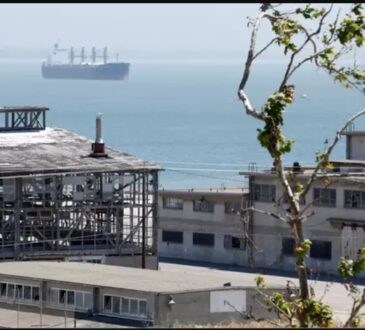
’t be confined to Ukraine. In his declaration of a new conflict with the West in his rant at the rally on September 30th, Putin was acknowledging a new phase of hybrid warfare. His targets are likely to be global.
“Everything is a weapon and everywhere is the battleground,” says Christopher Donnelly, doyen of analysts of Russia and the Soviet Union, describing the new mode of asymetric warfare. A dozen mysterious attacks or interferences with infrastructure systems, involving anything from gas pipelines in the North Sea and the Baltic, underwater cables and communications, and the outage of the systems management of a food distribution centre in Texas.
The explosions that holed the two main Nord Stream gas pipelines from Russia just off the Baltic island of Bornholm are now thought to have been sabotage. They were most likely caused either by mines on a time fuse, or remotely detonated, or due to direct attack from Russian sabotage squads.
Russia has a dedicated underwater commando, run by the Main Directorate of Deep-Sea Research, known as GUGI, which operates independently within Moscow’s defence ministry, and has links to the main security service, the FSB. Gugi has a specialist surveillance ship the Yantar, and uses two submarine ‘mother ships.’ In turn they can launch minisubs for survey and sabotage operations.
The Yantar has been active in the English Channel, and its recent appearance in waters where vital transatlantic cables and pipelines come ashore has caused Ireland’s defence ministry to raise the alarm. So too has Norway’s government, concerned about increased Russian spying, including drone overflights, round its main gas terminals and command centres at Karste and Kolisnes. Norway has reported a mysterious ‘disappearance’ of lengths of communication cable from its waters.
Britain is being urged to be more vigilant in safeguarding its offshore oil and gas facilities, and to increase patrols by submarines, surface ships and surveillance aircraft.
GUGI command is based at Olenya Bay near Murmansk in the Arctic. There they are in charge of the trial programme for Russia’s Poseidon ballistic nuclear torpedo, carried by their newest submarine, the Belogrod. The submarine was last tracked in the Barents Sea, and has since been lost to Western trackers.
The spread of Putin’s new version of hybrid warfare has made resilience a number one priority for Nato and allied forces. Recently Policy Exchange, the leading Conservative think tank, reported that the world’s undersea cable networks comprise 213 independent cable systems, fibre-optic lines stretching for 545,018 miles. They carry 97% of global communications, including financial transactions of $10 trillion a day.
Western security and intelligence forces are having to rethink resilience drills to protect vital infrastructure, home and abroad – very quickly. This weekend overhead cables on German railways have been sabotaged. The UK is to send more patrols to North Sea platforms and terminals.
The world was surprised in 2014 with Putin’s annexation by stealth of Crimea by teams of ‘little green men’, military infiltrators. The threat now is of ‘little blue men’, the saboteur underwater commandos of the GUGI command – a far more lethal force.




